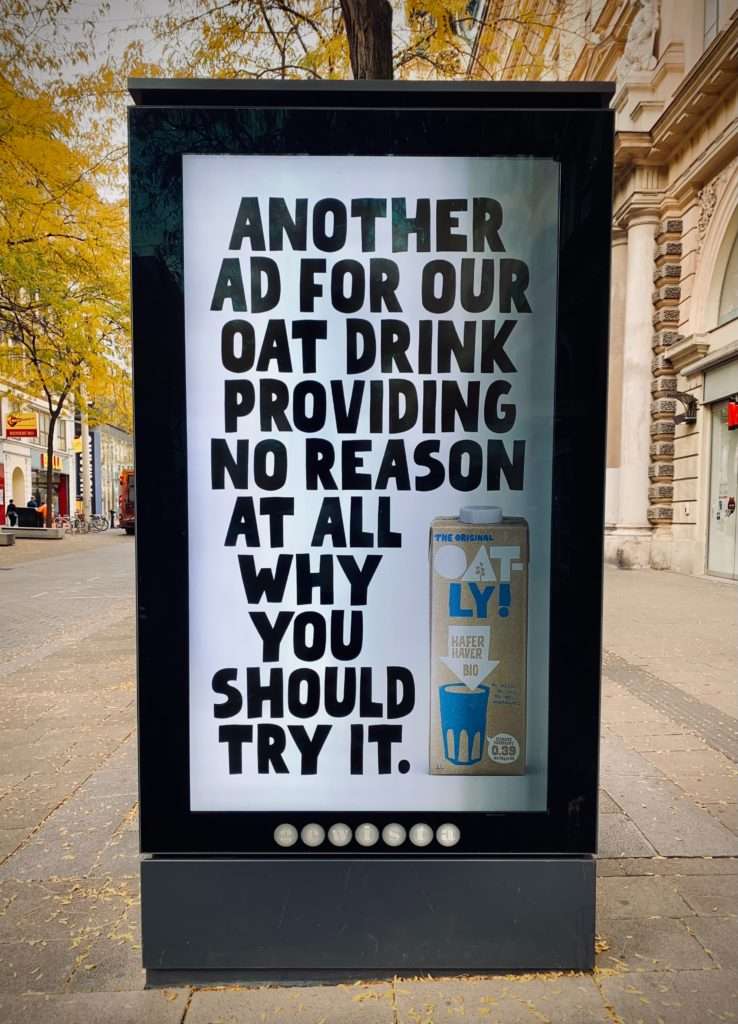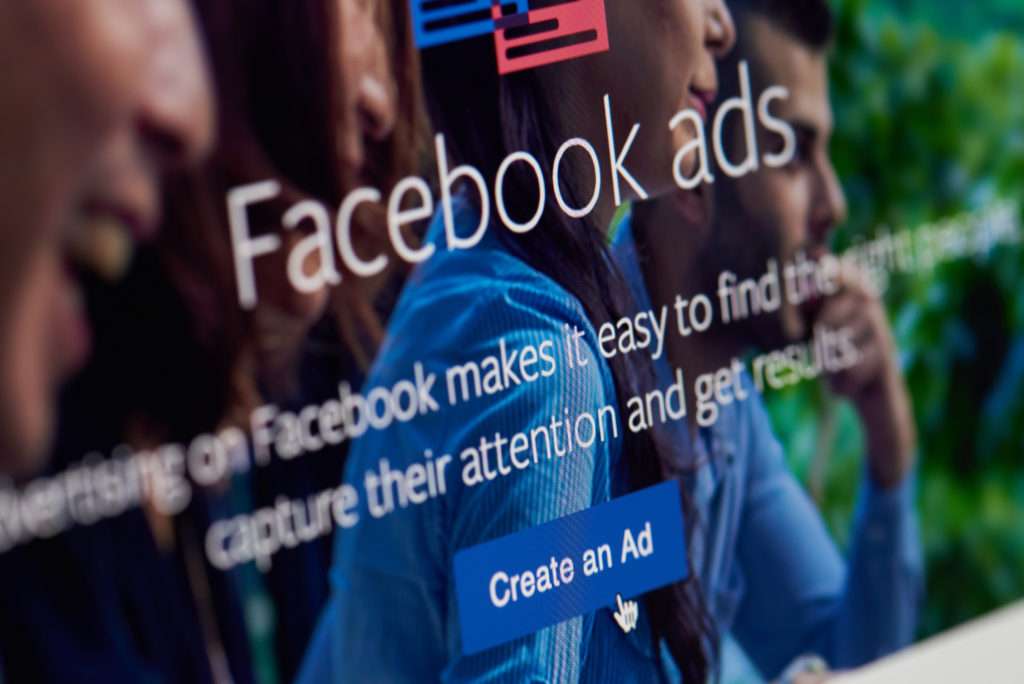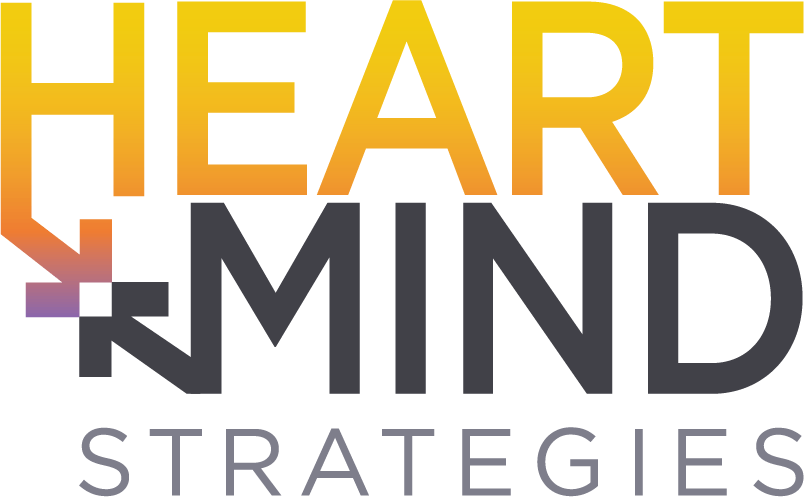The advertising industry is overloaded, overwhelmed, and oversaturated. On both sides of the equation — for the consumers and the advertisers — this can seem like an insane necessity in life rather than something of value.
As consumers, we’re bombarded with ads in every channel — on social media, on TV, on billboards, on the radio, in newspapers and magazines, in pop-ups while visiting a website, and in the junk mail that still somehow ends up in the mailbox even when you didn’t ask for it. It’s inescapable. In 2022, advertising is everywhere, in every form, all the time. Brands and businesses are constantly vying for a second of our attention, asking us to look at their product or their services for just a moment, just long enough to pique our attention to compel us to buy. The average American will see 4,000 – 10,000 ads per day, — up from 500 per day in the 1970s, which still sounds like a lot. Four out of ten global internet users have resorted to using an adblocker. Despite being exposed to thousands of ads every day, our brains will still only notice less than a hundred, and we’ll actively pay attention to even less. How often do you really stop and pay attention to an advertisement? Once a year, during the Super Bowl commercials?
This poses a challenge for brands – or maybe an opportunity? How do they navigate planning decisions within this digital advertising landscape? How can they differentiate themselves enough to catch the attention of the audience they’re trying so hard to get? And is there any way to create new, innovative advertising ideas?
We covered this topic in our November Connections Roundtable with our friend Faris Yakob, creative strategist, co-founder of Genius Steals, and author of Paid Attention.
Paid Attention, an updated second edition released this year, delivers new and innovative insights into advertising ideas. It includes real-world examples of advertising campaigns, provides a model for influencing human behavior, and offers toolkits with best practices on brand behavior and effective communication. The second edition also explores the latest evidence about attention spans and trends in online advertising, as well as new case studies on brand ideas. Genius Steals is a nomadic creative consultancy — founded by Faris and his wife, Rosie — that works with brands and agencies to deliver keynotes, workshops and training, consulting sprints, and thought leadership content.
Sign up for their twice-weekly newsletter Genius Steals — it’s amazing.
Related: Creativity in Times of Crisis

The State of Advertising
Figuring out ways to capture and hold people’s attention is at the center of contemporary capitalism. ComScore says 5.3 trillion ads were shown worldwide in 2012, which is such a huge number that it’s hard to even comprehend (or believe) — and that was ten years ago. Though the number of ads continues to grow exponentially, billion-dollar businesses can be built by capturing less than a minute of an average user’s daily attention. Just look at Buzzfeed, Vice, or Vox — all billion-dollar companies with an average ad view time of less than 36 seconds.
Yet despite the growing number of advertisements vying for our attention, humans only have the capacity to pay attention for about 12 hours per day, which means there’s a finite amount of attention available.
“Attention is a function of an awake human consciousness,” Faris said. “And sometimes we have to do things that aren’t looking at ads and media — work and sleep, and other things that involve not constantly consuming media. If you look at media measurements in the most mature markets — Australia, America, in the UK especially — Nielsen and their contemporaries will tell you that media consumption has always grown historically as new channels have emerged, and then it stopped growing about 5, 6, 7 years ago. It stopped because it reached about 12 hours and change a day…If people are really consuming 12 hours of media a day, there is no more time for them to consume more media. That’s it. That’s the finite amount of attention available. And so, what does that mean? Well, it means it’s getting harder than it used to be…It means that every idea is in a direct competition with every other idea for attention. It’s like an arms race. It’s a zero-sum game. If you want attention for your idea, for your brand, for your cause, for your products, you have to take it from somebody else that already is using it.”
This means advertising is a much different game than it was 50, 30, or even 10 years ago. It’s no longer just a matter of trying to get someone’s attention. If you want your consumers to pay attention to your advertising, then you need to be creative enough to earn it – authenticity, content, utility, and value.
Perhaps the biggest change this should trigger for brands is recognizing their objective must be attracting moments of focused attention more than simply getting repeat exposure. Traditional thinking has been people need to be hit with ads X number of times to take action – while there may be merit to repeat exposure for recall, truly motivating action requires moments of focused attention.
“The great ad man of San Francisco, Howard Gossage once said, people do not read ads. Sometimes they read what’s interesting to them, and sometimes that’s an ad,” Faris said. “The challenge comes from the fact that impressions are inherently binary. There either is an impression or isn’t. Although in digital as we discussed, that’s sometimes confusing because that’s a very thin way of understanding attention…If you have thousands and thousands of low attention impressions, you get a sense that brands exist. But satisfyingly, from my point of view, more attention looking at the ad seems to work better. And if you look at the ad for longer with high focus, that works better, too.”
Related: 7 Tips to Enhance the Customer Experience

What is creativity?
Creativity is essential to successful advertising that will attract focused attention. And though some may think of creativity as coming up with new ideas, Faris explained that it’s more helpful to think of creativity as the process of linking diverse and/or adjacent ideas to find unexpected connections.
“Creativity’s an input function and an output function. And what goes into your head gets mixed up and non-obvious connections become associative connections, what we call lateral thought, not linear thought. And lateral thought is what creative ideas are, because we put things together in our head and create new things. Now what we believe is that the ideas that are most interesting are the least obvious combinations possible. So, the dynamic tension of having two very disparate things held together by an idea that makes intellectual sense is what makes something creative.”
Faris went on to explain creative ideas come from stealing. This may sound odd when you first think about it, but consider that Apple is shameless about stealing their best ideas. They didn’t invent MP3 players, or the iPad, or multitouch computing — they acquired the technology from other companies, got it working on a screen, refined and combined it with other elements until they made something perfectly designed for people.
“Our consultancy is called Genius Steals because of the quote: talent imitates, genius steals,” Faris said. “That actual line comes from T.S. Elliot, the poet, who wrote in a piece of criticism that immature poets imitate, and mature poets steal. What he was saying was, as a tradesman, a creative craftsman, you learn your crafts through copying people who are good…That’s how we learn. But at a certain point, you stop copying and imitating and you start recombining. We believe the ideas are new combinations. That’s a quote from a book by the ad man, James Webb Young, that there only can be new combinations. There’s no other way for ideas to exist in the world. In our experience, in our belief, you could say nothing comes from nothing.”
Related: How to Engage Consumers in a New Streaming Reality
The Trillion Dollar World of Political Advertising
During U.S. Elections, political advertising is everywhere. Attack ads on TV channels, yard signs in front of every house, and donation fundraisers in every email inbox. The political advertising industry is lucrative — the next election in 2024 is expected to run $1-3 trillion in ads. But how does advertising operate in the political sphere? Does it differ from advertising a product or service?
Faris notes the US political advertising market has made it more important than ever to recognize that having more information does not mean being more informed. The never-ending “noise” or political ads amplifies the challenges with the current system.
“The more money in advertising, the more noisy it gets,” Faris said. “What we used to charmingly call clutter — i.e., other people’s advertising — is now much worse because there’s so many people trying to attract attention.”
Brands should learn from what voters, who are also consumers of their products and services, dislike most about the political advertising reality today. Honesty, integrity, and facts matter. Focused attention is earned when clever connections of ideas emerge in unexpected, but authentic and very real, ways.
Respect Your Advertising Audience
Above it all, it’s important for brands to respect and remember that their consumers are people. They’re not a sale, or a number in a spreadsheet — they’re human beings, with lives and jobs and a million different things every day that are crying out for their attention.
“Ultimately, human beings are making decisions,” said Maury Giles, Chief Growth Officer of Heart+Mind. “If we’re going to add value and content to their lives that they’re going to pay attention to, if it’s authentic to who we are and we can resonate with something that matters to them, then we’re really championing the human. And I think that aspect of respect is what it’s all about.”
Faris’ four practical applications for advertising and media strategy:
- Attention is valuable: Respect people and their attention. Don’t look at them as numbers on a spreadsheet. Creatively earn their focused attention.
- Look for impact: Do tests to see what works for you and your brand, and then measure those tests rigorously. Make sure you have a measurement framework in place before you do any marketing, otherwise it’s a waste of time because you won’t know whether it worked or not.
- Whatever’s current has currency: PR skills are so relevant today because the discourse is changing so fast and what cuts through is not clear.
- If you’re a marketer pick good agencies and trust them, because good agencies know how to do this intuitively. That’s what they’re for.
